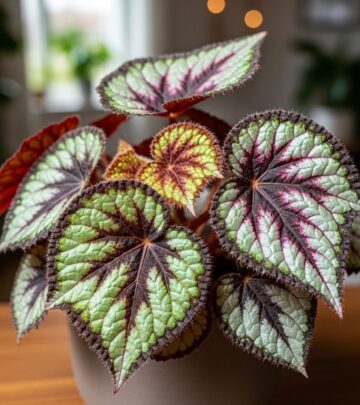Wood Rush (Luzula): A Shade-Loving Ground Cover for Year-Round Beauty
Grassy evergreen clusters that enrich sun-deprived spots with lasting texture and color.

Image: HearthJunction Design Team
Wood Rush (Luzula): An Overview
Wood rush, belonging to the genus Luzula, is a remarkable yet often underappreciated member of shade gardens. Its grassy appearance and flexible growing habits make it a favorite among gardeners aiming to create lush woodland scenes or simply fill tricky shady corners with evergreen texture. Despite its grass-like look, wood rush is a true rush, a fact underscored by its botanical family and its unique reedy stems.
Key Characteristics
- Botanical Name: Luzula spp. (notably Luzula sylvatica, the greater wood rush)
- Type: Grassy ornamental, perennial
- Lifespan: Perennial
- USDA Hardiness Zones: 3–10
- Light Requirements: Full to part shade
- Soil Preference: Tolerates clay soils, prefers organically rich, moisture-retentive ground
- Foliage: Reedy, cylindrical stems with semi-evergreen to evergreen leaves dependent on the variety and climate
- Peak Season: Year-round, offering persistent color and form
- Design Tip: Excellent for woodland gardens, beneath large trees, or as a low border
- Companions: Ferns, azaleas, Pieris, and other shade-loving perennials
What Makes Wood Rush Unique?
Many plants that look like grasses aren’t: Wood rush is a member of the rush family (Juncaceae), setting it apart from true grasses. Its reed-like, cylindrical stems and clumping habit are characteristic. One of the standout species, Luzula sylvatica (greater wood rush), brings evergreen appeal and can quickly form mounded carpets that crowd out weeds.
Selected garden-worthy cultivars include:
- Luzula sylvatica ‘Aurea’: Features foliage that glows golden in autumn.
- ‘Marginata’: Boasts variegated leaves with distinct creamy margins.
Wood rush not only adds persistent greenery but also complements shade perennials, creating an informal tapestry in woodland gardens. It is often paired with the likes of ferns, azaleas, and Pieris, contributing layered textures and subtle contrast.
Growing Requirements for Wood Rush
Site Selection
Wood rush is most at home in the shade. It prosperously fills spaces under towering trees, along the edges of wooded paths, or anywhere that intense sun is filtered. Its shade tolerance is exceptional, and it’s less demanding regarding soil than many woodland plants.
Soil Preparation
Although wood rush tolerates clay soils, for the healthiest and most vigorous plants, enrich the planting area with organic matter (such as compost, leaf mould, or well-rotted manure). When preparing a new site:
- Loosen the soil to a depth of 12–16 inches (30–40 cm).
- Mix in ample organic matter to improve moisture retention and fertility.
- Ensure the site drains well after watering but remains consistently moist.
Planting Process
- Space plants around 12–18 inches apart; closer spacings will quickly fill in for a seamless ground cover.
- Water thoroughly after planting, ensuring roots settle into their new environment.
Water Needs
Wood rush is relatively drought tolerant once established but prefers even moisture, especially in its first season or during prolonged dry spells.
Maintenance
- Minimal care is required beyond annual mulching and occasional division to keep clumps vigorous.
- Remove tattered leaves after winter, if desired, to keep the planting tidy.
- Feed with a balanced fertilizer in spring for best results, though wood rush is generally undemanding.
Design Tips: How to Use Wood Rush in Your Garden
Wood rush’s dense, tufted form and enduring foliage make it a versatile design element in gardens both formal and naturalistic.
Top Landscape Uses
- Woodland gardens: Wood rush forms lush swaths that anchor other shade plants.
- Ground cover: Quickly fills in under trees, suppressing weeds while adding texture.
- Mixed borders: Contrasts beautifully with ferns, hellebores, and spring bulbs as a mid-height filler or edge softener.
- Naturalized plantings: Its native look helps blur garden boundaries with wild surroundings.
- Container gardens: Hardy cultivars can be used in shaded pots and window boxes, paired with trailing or upright foliage plants.
Notable Companions
| Companion Plant | Benefit |
|---|---|
| Ferns | Enhances the woodland look with contrasting textures |
| Azaleas | Brings spring color above the evergreen carpet |
| Pieris | Complements mounded growth and provides seasonal bloom |
| Hellebores | Adds early blooms for winter and spring interest |
Wood Rush Species and Notable Varieties
While Luzula sylvatica is the most commonly grown species, gardeners have several options. Key differences revolve around size, foliage color, and winter hardiness.
- Luzula sylvatica (Greater Wood Rush): Tallest, mounding habit, evergreen in mild climates, staple of woodland gardens.
- ‘Marginata’: Distinguished by white to cream-edged variegated leaves.
- ‘Aurea’: Foliage turns golden in fall, holding bright color into winter.
- Luzula pilosa (Hairy Wood Rush): Smaller in stature, appreciated for its dense, hairy foliage.
Benefits of Planting Wood Rush
- Low Maintenance: Requires little intervention once established.
- Evergreen Texture: Maintains garden structure during every season.
- Shade Solution: Thrives where lawn grasses and many perennials struggle.
- Wildlife Value: Provides cover for ground-dwelling insects and small mammals.
- Erosion Control: Clumping roots help stabilize soil on slopes and banks.
Care and Troubleshooting
- Pest Resistant: Seldom troubled by insects or mammals.
- Disease Resistant: Problems are rare; watch for occasional mildew in very humid, crowded sites.
- Dividing Clumps: Every 3–5 years, divide wood rush in spring or early fall to rejuvenate growth and propagate new plants.
Combining Wood Rush with Other Perennials
Wood rush’s adaptability extends to mixed perennial plantings, especially in gardens designed for year-round interest. Its grassy plumes contrast with the bold foliage of ferns and broad-leafed shade perennials. Combined with long-blooming perennials such as hellebores and woodland bulbs, wood rush helps maintain structure when other plants are dormant.
Wood Rush in Native and Sustainable Gardening
With growing interest in native and sustainable landscapes, wood rush is gaining respect as a resilient native ground cover. It requires less water, fertilizer, and care than most turf grasses, and its unassuming blooms provide hidden value for pollinators.
Wildlife Connections
- Insects: The dense foliage offers habitat for beneficial insects, including ground beetles.
- Pollinators: While not showy, its small flowers support some native pollinators in spring.
- Birds: Seed heads can attract small woodland birds in autumn.
Frequently Asked Questions (FAQs) About Wood Rush
Q: Is wood rush deer-resistant?
A: Yes. Wood rush is rarely browsed by deer, making it a valuable ground cover in areas where deer are a persistent problem.
Q: How quickly does wood rush spread?
A: Wood rush forms clumps that gradually expand over time, but it is not invasive and generally stays where planted unless given ample moisture and ideal conditions.
Q: Can wood rush tolerate drought?
A: Once established, wood rush is somewhat drought tolerant, though it prefers consistent moisture for best performance.
Q: Does wood rush require pruning?
A: Pruning is not necessary beyond removing old or damaged leaves in late winter or early spring to tidy up the plantings.
Q: How does wood rush differ from ornamental grasses?
A: While similar in appearance, wood rush is not a true grass but rather a rush, identified by its round, reedy stems and lack of jointed nodes typical of grasses.
Gardener’s Tips for Success with Wood Rush
- Group planting: For best visual impact, plant in drifts or large swathes beneath trees or shrubs.
- Naturalizing: Integrate with other woodland plants for a layered, natural effect.
- Weed management: Dense ground cover suppresses most weeds, reducing maintenance.
- Shade combinations: Experiment with combinations of Luzula and hostas, foamflower, and wild ginger for a dynamic, low-light planting.
Conclusion: Why Choose Wood Rush?
Whether you’re seeking an effortless shade-loving ground cover, looking to infuse your garden with year-round texture, or aiming for a sustainable, wildlife-friendly landscape, wood rush stands out as a go-to perennial. Evergreen, adaptable, and easy to grow, it offers an answer to some of gardening’s toughest locations and rewards with years of low-fuss beauty.
References
Read full bio of Srija Burman












